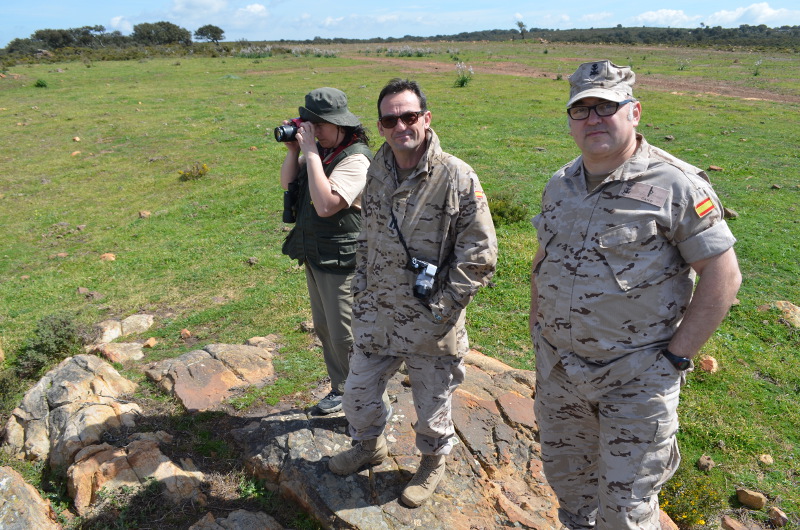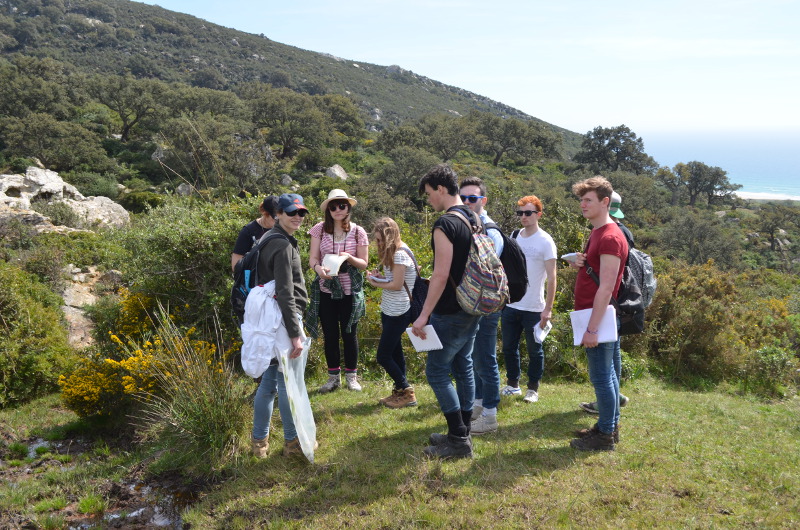It’s a good day to start #Museum week as I’m in the field with part 2 Biological Sciences students and am teaching plant family identification using the springtime flora of southern Spain. The Reading University Herbarium has an outstanding collection of modern plant material from the Mediterranean basin and Europe generally.
Today we were visiting a rocky hillside looking over the Atlantic Ocean with Africa on the horizon. The flora was typical southern european scrub dominated by Pistacia lentiscus, Cistus spp., Olea europea, Chamaerops humilis, Quercus coccifera with scattered Asparagus spp., Daphne cneorum, Teucrium …, and a huge range of other species. The site we were visiting is inside a Spanish army reserve and this has kept it clear of development and damage so it has a very high biodiversity. It is also the site used to re-establish Geronticus eremita (bald ibis) which has now started breeding on nearby cliffs outside the reserve.
 We were accompanied by two members of the Spanish army who were clearly very attached to the care and protection of this amazingly biodiverse area. We had the opportunity to see a number of unusual local species including the carnivorous plant Drosophyllum lusitanicum (Dewy Pine) that used to be included as an odd member of the Droseraceae but now has been shown to be more distantly related and has its own family, Drosophyllaceae. It is only about 20cm tall but has a strong smell of honey and has it’s sticky glands on the underside of its leaves causing an unusual reverse circinnation – the leaves roll outwards rather than inwards.
We were accompanied by two members of the Spanish army who were clearly very attached to the care and protection of this amazingly biodiverse area. We had the opportunity to see a number of unusual local species including the carnivorous plant Drosophyllum lusitanicum (Dewy Pine) that used to be included as an odd member of the Droseraceae but now has been shown to be more distantly related and has its own family, Drosophyllaceae. It is only about 20cm tall but has a strong smell of honey and has it’s sticky glands on the underside of its leaves causing an unusual reverse circinnation – the leaves roll outwards rather than inwards.
The students are now becoming familiar with: Fabaceae, Asteraceae, Apiaceae, Poaceae, Cyperaceae, Juncaceae, Fagaceae, Oleaceae, Papaveraceae, Cistaceae, Anacardicaeae, Xanthorrheaceae, Plumbaginaceae and many more. I think they have reached the stage where their brains are full (for today, at least).



Pingback: Wild Flowers of Eastern Andalucia by Sarah Ball | Culham Research Group